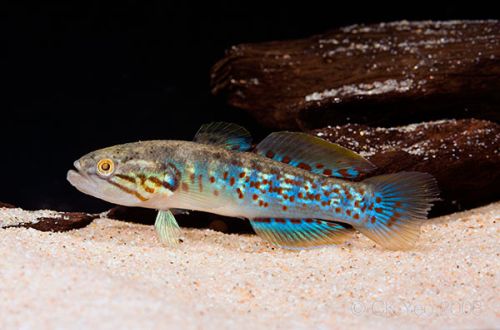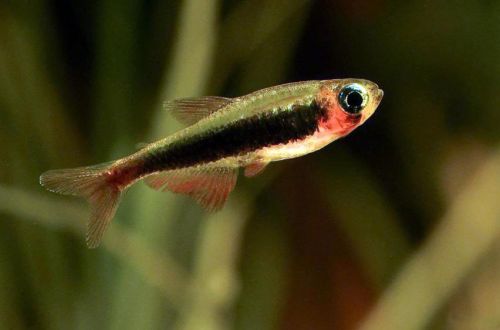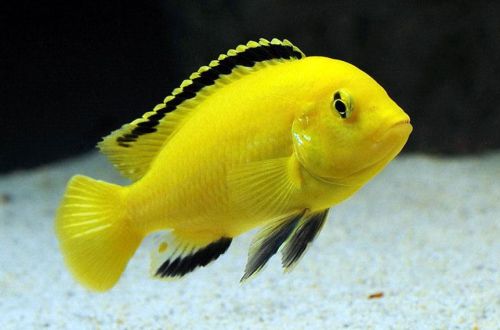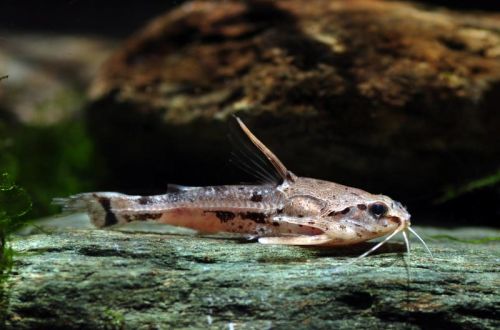
trout maurunda
Mogurnda Australian, Trout mogrunda or Australian gudgeon, scientific name Mogurnda mogurnda, belongs to the Eleotridae family. A good choice for the beginner aquarist. The fish have interesting colors and are easy to keep. However, they are not often found on sale.

Contents
Habitat
It comes from the Australian continent and the nearby island of Papua New Guinea. It occurs in various environments – streams, rivers, swamps, lakes, as well as in harsh conditions of reservoirs located in desert areas or with very low levels of dissolved oxygen.
Brief information:
- The volume of the aquarium – from 110 liters.
- Temperature – 24-26°C
- Value pH — 6.0–8.0
- Water hardness – medium (10-20 dGH)
- Substrate type – any
- Lighting – subdued
- Brackish water – no
- Water movement is weak
- The size of the fish is up to 17 cm.
- Meals – any
- Temperament – conditionally peaceful
- Content alone or in a group
Description
Adult individuals reach a length of up to 17 cm. Sexual dimorphism is weakly expressed, there are practically no external differences between the male and female. The fish have a large head and well-developed dorsal and anal fins, shifted closer to the tail.
The color is gray with a blue tint. There are small purple specks on the body and fins. The same color has two stripes passing from the eyes to the gill cover.
Food
The Australian gudgeon is unpretentious about the composition of the food. The aquarium will accept most dry, frozen and live foods. For example, a daily diet might look like this: flakes or granules combined with bloodworms, brine shrimp. It is allowed to use only dry food, but they must be of high quality and contain various components and additives.
Maintenance and care, arrangement of the aquarium
The optimal size of the aquarium for a small group of fish starts from 110 liters. Due to the fact that Trout maurunda lives in nature in various biotopes, sometimes in very extreme ones, it does not need any special decoration. The aquarist can choose it based on their own preferences. The main condition is the presence of potential shelters. They can be snags, dense clusters of plants, decorative items for aquariums, or an ordinary ceramic pot turned over on its side. Even a hollow PVC tube fits perfectly.
Water conditions also do not matter much. The fish are able to adapt to a wide range of pH and dGH values. However, when buying, you should check with the seller in what hydrochemical conditions the fish were kept and bring them in the aquarium to close values. Too big and abrupt changes are usually detrimental to the well-being of any fish, even such a hardy one.
When keeping, it is important to ensure high water quality. Although its composition may be different, a large amount of organic pollution and excess concentrations of nitrites, nitrates and other products of the nitrogen cycle should not be allowed. It is recommended to install a productive filtration system and carry out a weekly replacement of part of the water with fresh water.
Behavior and Compatibility
It belongs to territorial species, it will compete with relatives for a plot at the bottom, so make sure that everyone has enough space. You should avoid mixing with other territorial fish, as well as those with elongated veil fins. Mogrunda Australian can bite them. Compatible with active fish such as Barbs, Rainbows, some Characins, Corydoras catfish.
Breeding / breeding
Breeding in a home aquarium is possible, but comes with some challenges. In order to preserve offspring, spawning is preferably carried out in a separate tank. In addition, fish are very picky about choosing a partner, so it’s not enough just to get a male and a female and wait for a pair to form. A pair can form naturally if a group of young fish are placed together and will grow together.
With the onset of the mating season, the couple chooses a place for spawning. It can be a flat stone or any other flat surface. The female lays from 20 to 200 eggs, attaching them with thin threads. This is where her work ends. The male remains to guard the clutch during the entire incubation period (5–7 days). After that, he also loses interest in his offspring. Adult fish should be isolated from fry, otherwise the latter will be eaten. Feed ciliates with shoes or specialized micro-feed, as they grow older, Artemia nauplius can be fed. The fry will grow at different rates, and the larger ones will begin to eat their smaller counterparts.
Fish diseases
Health problems arise only in case of injuries or when kept in unsuitable conditions, which depresses the immune system and, as a result, provokes the occurrence of any disease. In the event of the appearance of the first symptoms, first of all, it is necessary to check the water for the excess of certain indicators or the presence of dangerous concentrations of toxic substances (nitrites, nitrates, ammonium, etc.). If deviations are found, bring all values back to normal and only then proceed with treatment. Read more about symptoms and treatments in the Aquarium Fish Diseases section.





